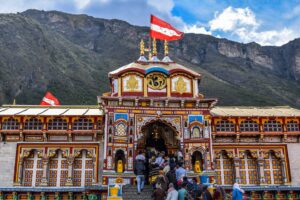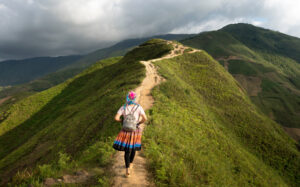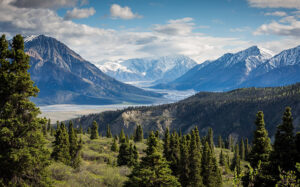Uttrakhand
Culture of Uttrakhand:
Uttrakhand, formerly a part of the northern Indian state of Uttar Pradesh, is known for its rich cultural heritage, traditions, and natural beauty. The culture of Uttarakhand is deeply influenced by its geographical and historical factors. Here are some key aspects of the culture of Uttarakhand:
- Language and Literature:
- The primary language spoken in Uttrakhand is Hindi. However, there are several regional dialects and languages, including Garhwali and Kumaoni, which hold significant importance in the region’s culture.
- The state has a rich literary tradition with famous poets and writers like Sumitranandan Pant and Mahadevi Varma hailing from this region. Their works often draw inspiration from the natural beauty of Uttarakhand.
- Folk Music and Dance:
- Folk music and dance are an integral part of Uttarakhand’s culture. Various folk songs and dance forms reflect the traditions, rituals, and daily life of the people.
- The “Jagar” is a traditional ritualistic song performed during religious ceremonies and festivals. “Chholiya” and “Langvir Nritya” are popular folk dance forms in the region.
- Religious Diversity:
- Uttarakhand is home to several important religious sites, including the Char Dham (Yamunotri, Gangotri, Kedarnath, and Badrinath) pilgrimage circuit. These sites draw millions of devotees and tourists each year.
- The state celebrates various Hindu festivals with great enthusiasm, including Diwali, Holi, and Navratri. The festivals often have a unique regional touch.

- Art and Craft:
- The region is known for its traditional art and craft, including woodcarving, stone carving, and woolen handloom products.
- Pahari painting, a style of Indian miniature painting, has its roots in the hill regions of Uttarakhand.
- Cuisine:
- The cuisine of Uttrakhand is simple and primarily vegetarian due to the influence of Hinduism. Common ingredients include lentils, vegetables, and dairy products.
- Popular dishes include “Ras” (a curry made from various dals), “Aloo Ke Gutke” (spicy fried potatoes), and “Bhatt Ki Churkani” (a black soybean dish).
- Traditional Attire:
- The traditional attire of Uttrakhand varies across regions. In Garhwal, men often wear “Dhoti-Kurta” with a turban, while women wear “Sari” with “Choli” and “Odhni” (headscarf). In Kumaon, women wear a “Ghagra” and “Choli” along with an “Odhni,” while men wear “Pajama” and “Kurta.”
- Festivals and Fairs:
- Utttrakhand hosts numerous festivals and fairs throughout the year, celebrating the state’s cultural and religious diversity. “Nanda Devi Raj Jat Yatra” and “Magh Mela” are some of the significant events that attract pilgrims and tourists.
- Trekking and Adventure Tourism:
- In recent years, adventure tourism has become an integral part of Uttrakhand’s culture. The state offers some of the best trekking and outdoor adventure opportunities in India.
- Environmental Conservation:
- Uttrakhand’s culture also emphasizes environmental conservation and reverence for nature. The state is home to several national parks and wildlife sanctuaries, promoting eco-friendly tourism.
Uttrakhand’s culture is a vibrant blend of traditions, spirituality, and a deep connection with nature. It continues to evolve while preserving its rich heritage in the face of modernization and globalization.
Cuisine of Uttrakhand:
The cuisine of Uttrakhand, a northern Indian state located in the Himalayan region, is known for its simplicity, use of locally sourced ingredients, and the influence of the region’s topography and climate. The food of Uttrakhand is largely vegetarian due to the religious and cultural practices of the region, with some exceptions in certain areas where non-vegetarian dishes are also consumed. Here are some key aspects of Uttrakhand cuisine:
-
- Staple Foods:
- Rice: Rice is a staple food in Uttrakhand and is commonly consumed in various forms like plain steamed rice or as a base for dishes like pulao.
- Wheat: Wheat is used to make chapatis (unleavened flatbreads), which are an essential part of the daily diet.

- Dairy Products:
- Dairy products like milk, yogurt, and buttermilk are widely used in Uttarakhand cuisine.
- Ghee (clarified butter) is commonly used for cooking and adds a rich flavor to many dishes.
- Local Ingredients:
- The state’s hilly terrain and fertile lands provide an abundance of fresh vegetables, including potatoes, spinach, fenugreek, and mustard greens.
- Fruits like apples, apricots, pears, and rhubarb are also grown in the region and feature in various dishes.
- Staple Foods:
- Dishes:
-
- Aloo Ke Gutke: This is a popular dish made from boiled potatoes sautéed with various spices and herbs.
- Phaanu: A lentil-based dish made with mixed lentils and a blend of spices. It is often served with steamed rice.
- Kafuli: A nutritious dish made from spinach cooked in a flavorful gravy of yogurt and fenugreek.
- Chainsoo: A dal (lentil) dish prepared with roasted black gram dal and a mix of spices.
- Bhang Ki Chutney: A spicy chutney made from hemp seeds, which are locally grown and considered a delicacy.
- Pickles and Chutneys:
- Pickles and chutneys made from locally available ingredients like rhododendron flowers, green chilies, and various fruits are commonly served as accompaniments.
- Sweets and Desserts:
- Bal Mithai: A sweet fudge-like dessert made from roasted khoya (milk solids) and coated with sugar balls.
- Singodi: A sweet treat made by steaming condensed milk and coconut in banana leaves.
- Gulgula: Small, sweet, and fried dumplings made from wheat flour and jaggery.
- Beverages:
- Buransh Juice: A refreshing drink made from the juice of the rhododendron flower, known for its cooling properties.
- Chhang: A traditional alcoholic beverage made from fermented millet or barley, often consumed during festivals.
- Food and Festivals:
- Food plays a significant role in Uttrakhand’s festivals and celebrations, with special dishes prepared during occasions like Diwali, Holi, and Makar Sankranti.
Uttrakhand’s cuisine reflects the simplicity and resourcefulness of the people living in the mountainous region, where locally sourced ingredients are used to create flavorful and wholesome dishes. The food not only sustains the locals but also showcases the unique flavors of the Himalayas to visitors.
Uttrakhand Religious Heritage:
Religious heritage refers to the cultural, historical, and spiritual aspects of a particular religion or religious tradition that are passed down through generations. It encompasses a wide range of elements, including beliefs, rituals, sacred texts, artifacts, architecture, art, and the practices associated with a specific faith. Religious heritage plays a significant role in shaping the identity, values, and customs of religious communities and often holds a place of importance in the broader cultural and historical context of a region or society.
Key aspects of religious heritage include:
- Sacred Texts:
- Many religions have sacred scriptures or texts that contain their core teachings and beliefs. Examples include the Bible in Christianity, the Quran in Islam, the Bhagavad Gita in Hinduism, and the Torah in Judaism.
- Religious Art and Iconography:
- Religious heritage often includes art forms such as paintings, sculptures, and stained glass windows that depict religious figures, events, and symbols. These artworks can be found in places of worship, museums, and galleries.

- Religious Architecture:
- Religious buildings like churches, temples, mosques, synagogues, and stupas are integral to religious heritage. These structures often feature unique architectural styles and designs that reflect the beliefs and traditions of a particular faith.
- Rituals and Ceremonies:
- The rituals and ceremonies associated with a religion are an essential part of its heritage. These may include worship services, festivals, pilgrimages, and rites of passage.
- Religious Practices:
- Practices such as meditation, prayer, fasting, and dietary restrictions are passed down through religious heritage and are central to the spiritual lives of adherents.
- Religious Symbols:
- Every religion has its own set of symbols that hold special meaning. For example, the Christian cross, the Islamic crescent and star, the Hindu Om symbol, and the Jewish Star of David.
- Religious Leaders and Figures:
- The stories and teachings of religious leaders, prophets, and saints are an important part of religious heritage. These figures often serve as role models and sources of inspiration for believers.
- Religious Music and Hymns:
- Music and hymns specific to a religion are often considered part of its heritage. They are used in worship and are sometimes preserved in written or oral traditions.
- Religious Artifacts and Relics:
- These can include items like relics of saints, religious relics, and objects associated with religious figures or events.
- Historical Sites:
- Locations with religious significance, such as the birthplace of a religious leader or sites of important religious events, are often preserved as part of religious heritage.

Preserving and understanding religious heritage is important for both religious communities and scholars of religion. It helps maintain a connection to the past, provides insights into the development of religious traditions, and contributes to cultural diversity and understanding among different faiths and societies. However, the preservation of religious heritage can sometimes be a source of tension, as it may conflict with modern development or the secular values of a society. Balancing the preservation of religious heritage with contemporary needs and values is an ongoing challenge in many parts of the world.
